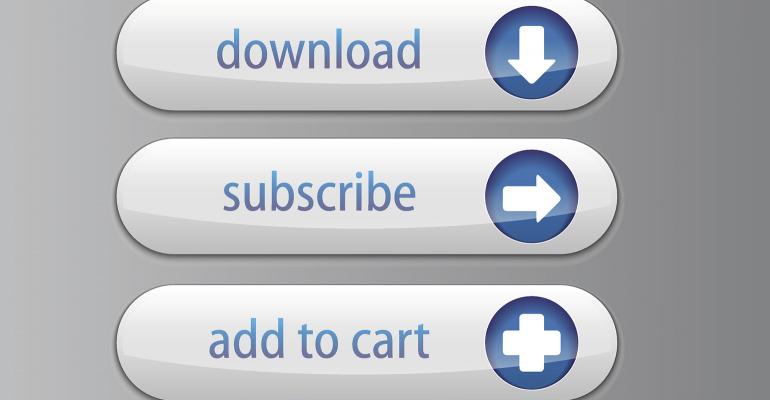Financial advisors are well aware of the importance of marketing, and successful advisors have always been particularly good at developing educational content and resources for clients and prospects. However, too often advisors see less than stellar results from their marketing, whether they’ve written a whitepaper, filmed a video, created a presentation, posted a blog, shared a social post or sent out an email. No one is sharing it, clicking it, calling you, or doing whatever it was you intended the content piece to do.
Why? Your CTA is MIA.
A call to action is quite literally just that—a call for someone to take action and do what you have asked of them. A CTA could be as simple as a request to share your post with their social network or as big as requesting an appointment to review their portfolio. You need to ask your audience to do something; you can’t expect them to take action on their own. In the simplest of examples, multiple studies show that asking your readers to share a blog post or comment significantly increases shares and comments.
CTAs can be used in just about every piece of marketing—your website, blog, email signature, email newsletters, social media profiles, presentations, videos and more. Most often, a CTA includes hyperlinked text or a button that takes the audience to your desired destination, whether that's a blog post, a website page, a download or a form submission.
Whatever your goal, your CTA must be well crafted for you to see results. While there is no one single formula for creating an effective CTA, there are five essential elements:
1. A Specific Value Proposition
To encourage prospects to take action, they need to know exactly what will happen when they click on your CTA. Before you create your CTA, define your goal. Do you want your audience to download your estate planning whitepaper? Attend your financial fitness workshop? Refer a friend or family member for a complimentary portfolio review? Don’t leave any room for ambiguity and make your goal clear.
2. An Enticing Reason
Just as you need a value proposition for your CTA, your audience needs a reason to take action. How will they benefit from clicking on your link, calling your office or subscribing to your newsletter? If you’re offering a whitepaper, explain what they will learn from the piece. By subscribing to your email newsletter, what information will they receive? When they call your office for a complimentary consultation, how will this help them get on track with their finances? Go one step beyond “Call our office today for a complimentary consultation” and add “to find out if you’re retirement ready.”
3. Command Verbs
A common mistake that advisors make is using the phrase “click here” as their CTA. “Click here to download my whitepaper.” “Click here to learn more about my investment philosophy.” This phrase doesn’t inspire action. Replace “click here” or similar variations with command verbs, such as “download,” “subscribe,” “register,” or “connect.” Rather than the passive “fill out a form to…” replace it with the more practical and inspiring “find out how…”. To inspire urgency, you can include adverbs, such as “now” or “today.”
4. Economy of Space
The golden rule of CTAs is to keep them short and sweet. If it takes more than five seconds to read your CTA, it’s too long. This doesn’t mean your CTA should be choppy, such as “download whitepaper now.” Rather, it means you should find opportunities to eliminate unnecessary words. Replace “Ready to learn more about estate planning? Click here to download our newest whitepaper,” with “Download our estate planning whitepaper to discover the five most common mistakes people make.” The stronger and shorter your CTA, the more substantial the impact. If you find your CTA is too wordy, eliminate adverbs first, such as “really,” “finally,” “very” or “quickly.”
5. Attention-Grabbing Aesthetics
Make it as easy as possible for your audience to see your CTA. For your blog posts, website, email newsletters and other marketing content, make the most of the design elements to boost your results. Make your hyperlinked text or button bold, italics and/or in a different color. While the CTA is typically at the end of your content piece, don’t be afraid to test out various options. If you are publishing a lengthy blog or presentation, include a CTA in the middle or beginning, such as “At the end of this article/presentation, we’re offering you an exclusive whitepaper on the biggest estate planning mistakes high-net-worth families make.”
A CTA is essential to have on every piece of content marketing you create, from a blog post to a presentation. By infusing these five elements into your CTA, you can inspire your audience to take action, generate more leads, and see greater engagement with your content marketing.
Craig Faulkner is the chief executive of FMG Suite, offering a complete inbound marketing solution for financial professionals. Follow him at @craigfaulkner_ on Twitter.





